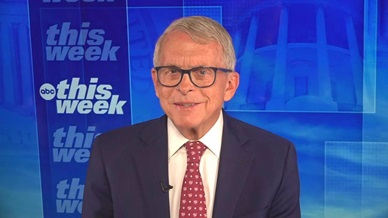 Robert Caro, the author of The Power Broker. Credit…Eugene Gologursky/Getty Images.
Robert Caro, the author of The Power Broker. Credit…Eugene Gologursky/Getty Images.
Dear Commons Community,
About twenty years ago, a new dean was appointed at the City University of New York. He had spent his entire life and career on the West Coast. He and I had lunch and I commented to him that if he wanted to understand New York, he should read Robert Caro’s The Power Broker. He immediately said to me, “Tony that is exactly what Chancellor [Matt] Goldstein said to me.” Earlier this week, The New York Times had an article written by Emma G. Fitzsimmons celebrating the 50th anniversary of Caro’s book. Here is an extended excerpt.
Once you’ve read The Power Broker, it’s hard not to see the legacy of Robert Moses everywhere you look.
I read the book in 2016 when I reported on the Second Avenue subway, which opened then in Manhattan nearly a century after it was first proposed. I wanted to know why New York City stopped expanding the subway in the 1960s and learned about the car-loving reign of Moses, painstakingly detailed by Robert Caro over 1,246 pages.
As the book hits its 50th anniversary this month, it is still beloved in political circles and serves as a Rorschach test for diagnosing what ails the city and how to fix it.
Brad Lander, the city comptroller who is running for mayor against Eric Adams next year, read it in 1993 with a group of young planners and immediately took a daylong driving tour of places mentioned in the book “touching all five boroughs, and ending on Randall’s Island, where Moses collected the tolls that were the coin of his realm.”
His main takeaway? City planners must balance getting projects done with a “vision for the growth of our city that is built with its residents, not by paving over them.”
Another mayoral candidate, Zellnor Myrie, a state senator from Brooklyn, said that what stuck with him is that “local government can either be an immeasurable force for long-lasting good, or, with shortsightedness, lack of inclusion and arrogance, a tool for permanent harm.”
Janno Lieber, the chairman of the Metropolitan Transportation Authority, said that his lesson was that “anybody who shares Moses’s view that mass transit is the past and not the future will be proven wrong.”
Adams was less effusive, telling reporters recently that he read the book, but did not have “any feedback” on what it meant to him.
Scott Stringer, another mayoral challenger, said the book showed how “land use and zoning, without proper checks and balances, can have long-term, dire consequences for urban planning.”
Jessica Ramos, a state senator from Queens who is considering running for mayor, said she read the book from “the perspective of someone who grew up in the segregated city Moses designed.” She said she wondered sometimes why candidates put the book in the frame on video calls: “Is it there because you admire Caro or because you admire Moses?”
And who is the Robert Moses of today?
Andrew M. Cuomo, the former governor, was similarly ambitious and ruthless.
Lander named Dan Doctoroff, a top official under former Mayor Michael R. Bloomberg, as the leader who came the closest to Moses in his impact on the city: “But I’m pleased to say he evolved over the course of his career to focus far more on making it inclusive and sustainable.”
Justin Brannan, the powerful chair of the City Council’s finance committee, named Jacques Jiha, the director of the city’s Budget and Management Office under Adams, as a modern-day Moses. Jiha has overseen budget cuts to libraries and free preschool and reshaped city government.
Brannan said he read the book after growing up in Brooklyn in the shadow of the Verrazzano-Narrows Bridge, a major Moses project, and he’s still holding out hope for a movie version directed by Oliver Stone, which was announced by HBO in 2011.
For now, there is a special exhibit at the New-York Historical Society and a podcast dissecting the book.
Some Caro fans are more fanatic than others, and we tend to find each other. Monica Klein, a Democratic political consultant, is part of a group chat dedicated to analyzing the book. They even have matching black baseball caps with red letters that say: “The Power Broker Book Club.”
This summer, when Gov. Kathy Hochul abruptly canceled congestion pricing — a plan that would have tolled cars entering Manhattan to pay for subway upgrades — Klein texted me: “Robert Moses is definitely cackling with glee right now.”
I grew up in the South Bronx in the 1950s and I saw first hand how Moses’ projects such as the Cross-Bronx Expressway completely destroyed stable, multi-generation neighborhoods one after another. The Bronx has never recovered.
Tony
 Lunar eclipse on May 15, 2022. (Courtesy: Paul Nolte FugaFoto Low Altitude Imaging)
Lunar eclipse on May 15, 2022. (Courtesy: Paul Nolte FugaFoto Low Altitude Imaging)










